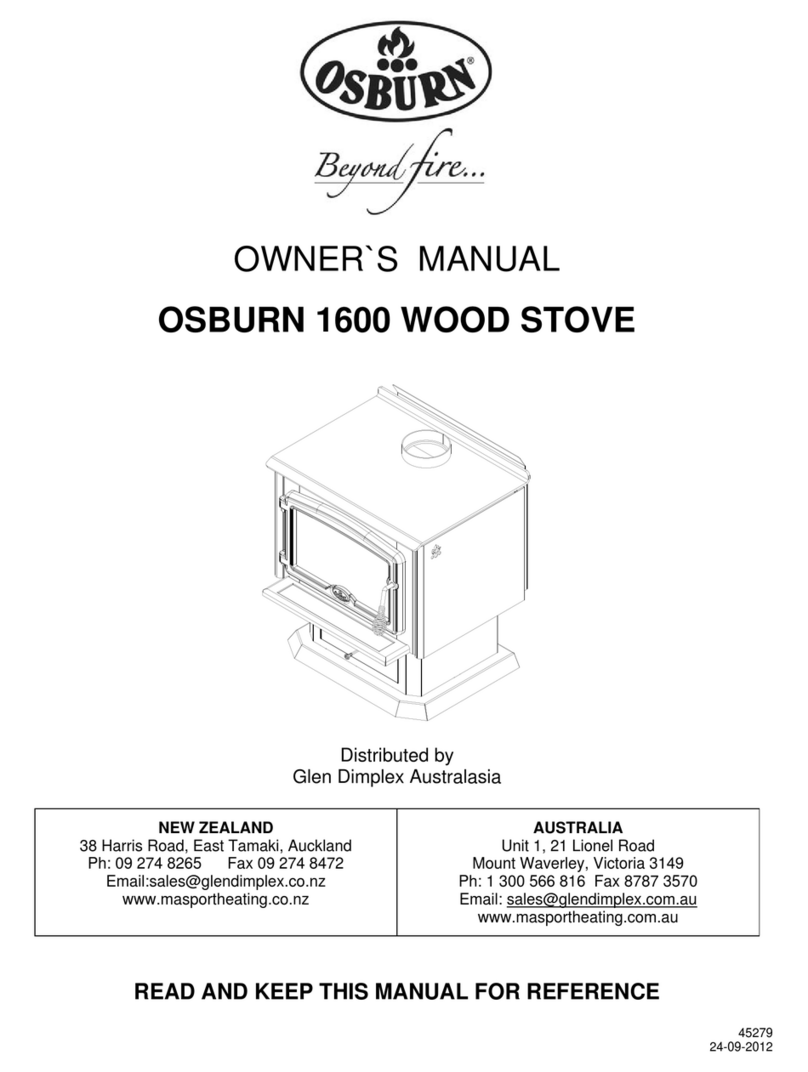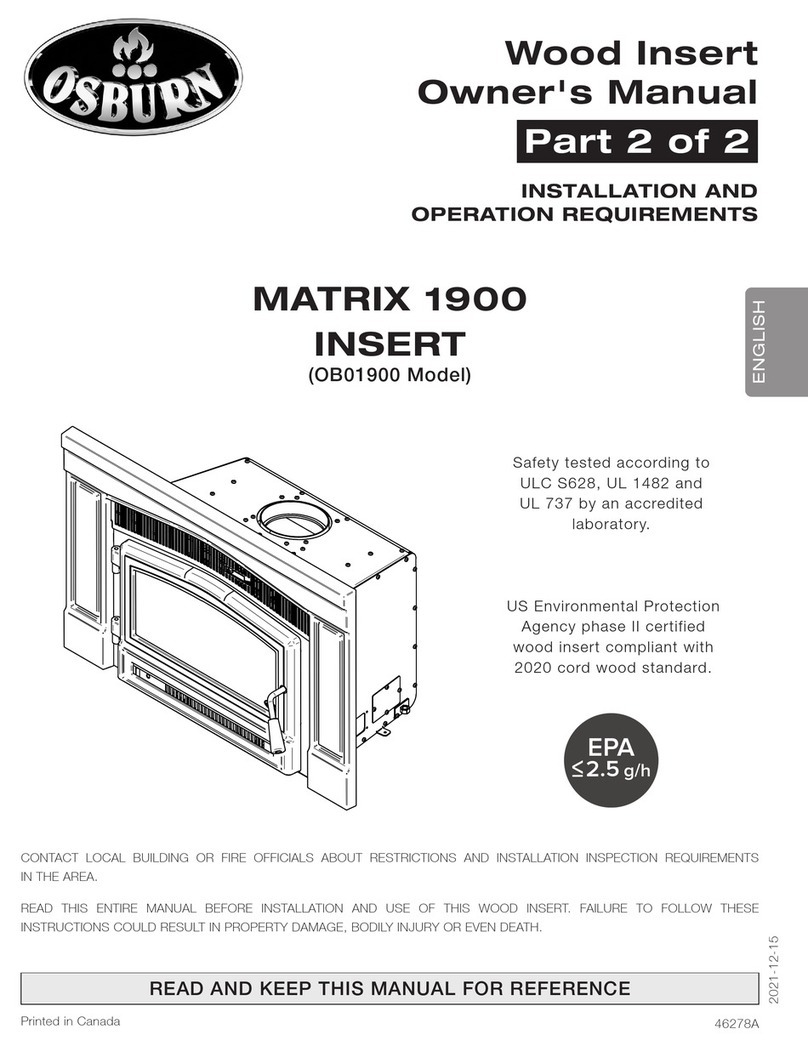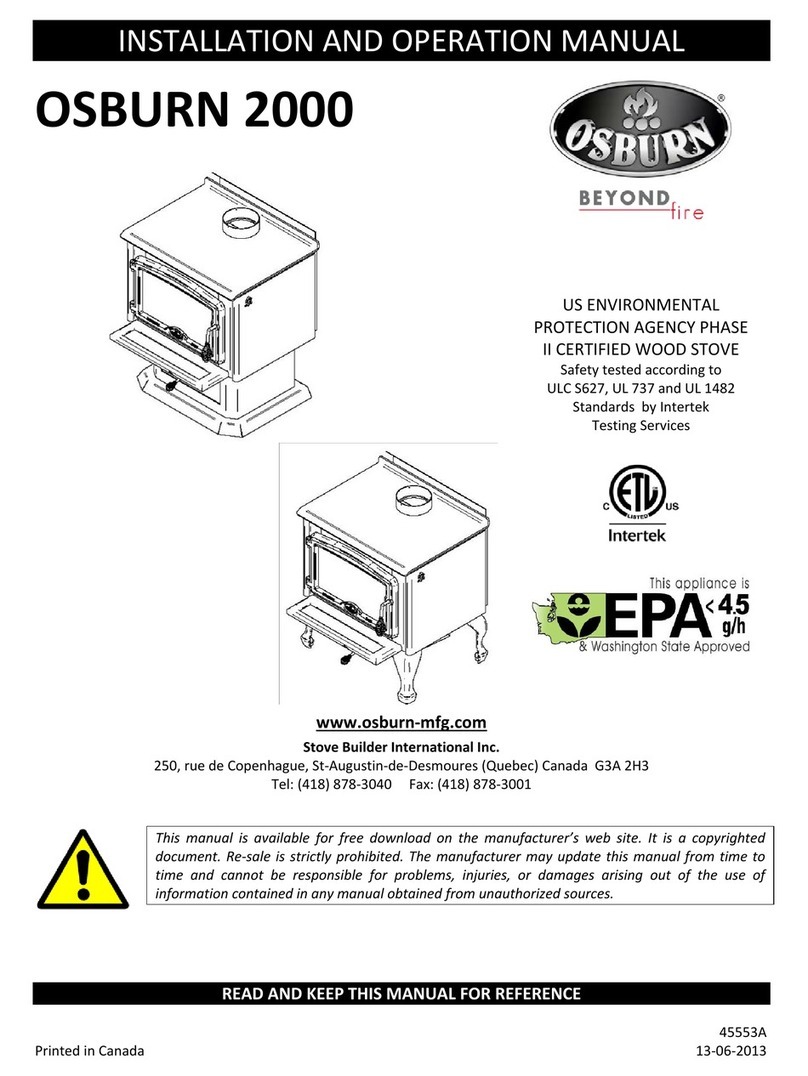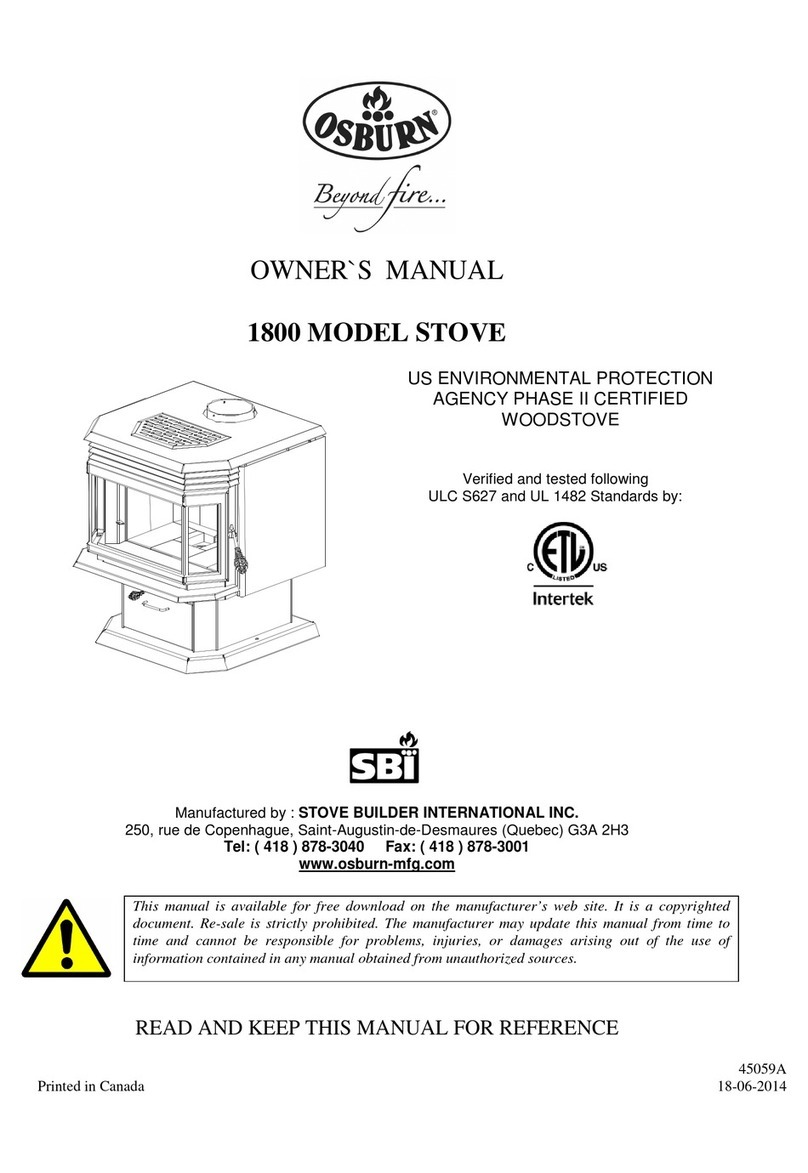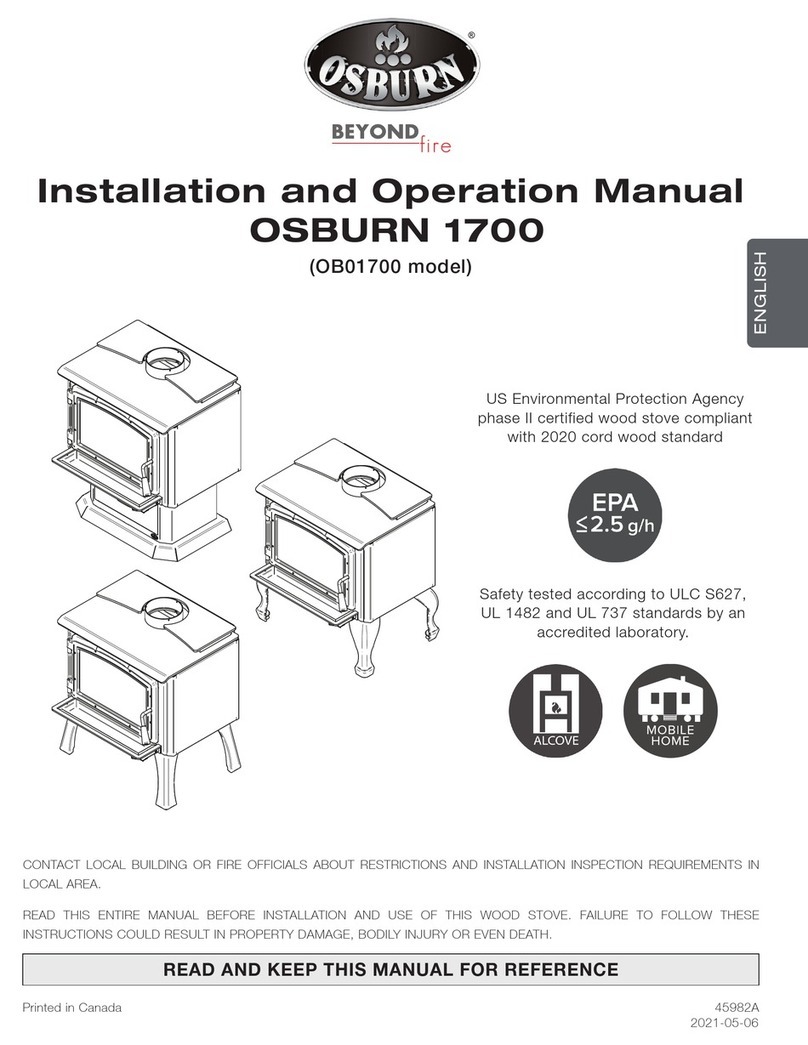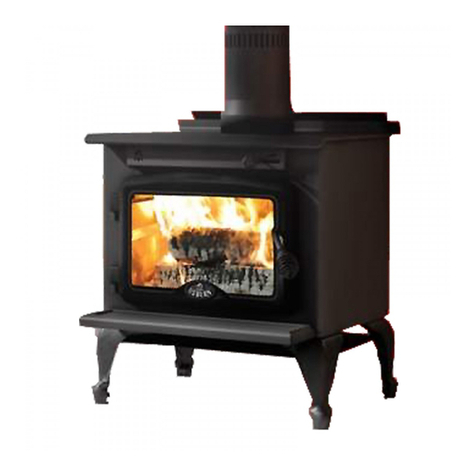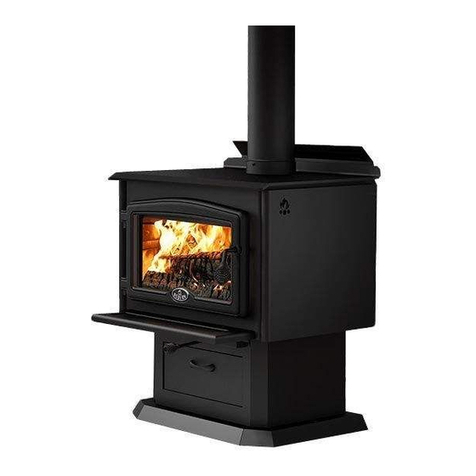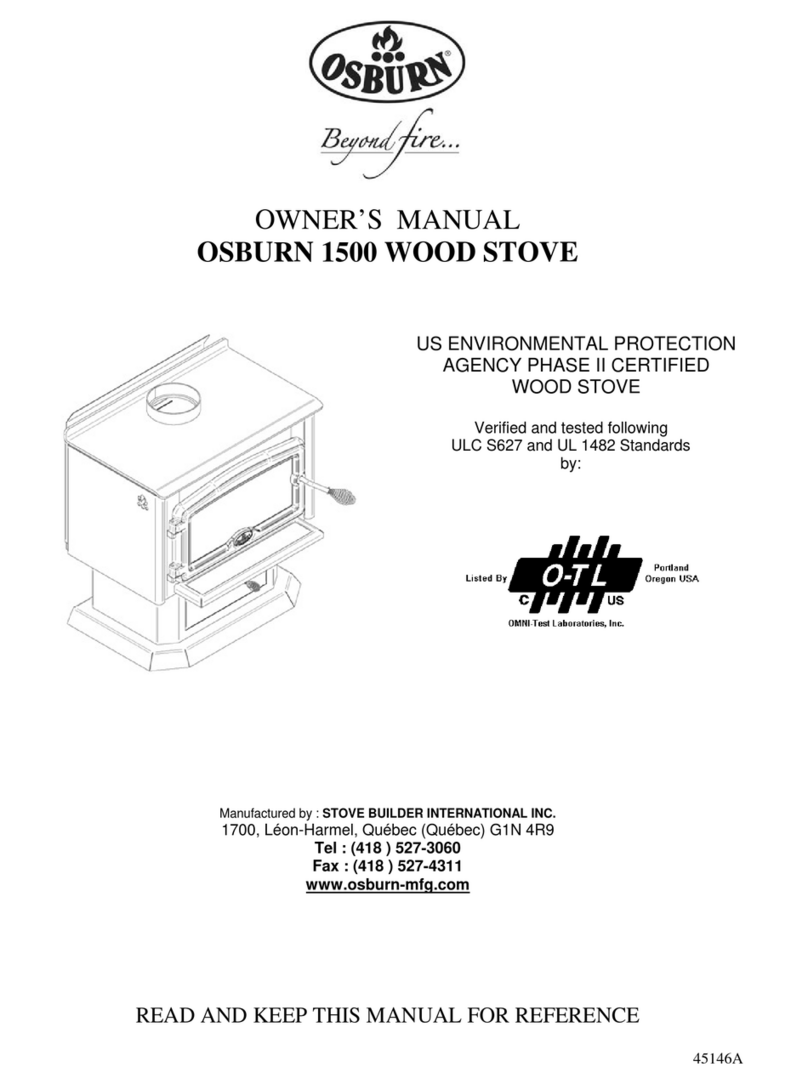Osburn 1500 User manual

READ AND KEEP THIS MANUAL FOR REFERENCE
45146A
Printed in Canada 17-10-2011
OWNER’S MANUAL
OSBURN 1500 WOOD STOVE
US ENVIRONMENTAL PROTECTION
AGENCY PHASE II CERTIFIED
WOOD STOVE
Verified and tested following
ULC S627 and UL 1482 Standards
by:
Manufactured by : STOVE BUILDER INTERNATIONAL INC.
250, rue de Copenhague, Saint-Augustin-de-Desmaures (Quebec) G3A 2H3
Tel: ( 418 ) 878-3040
Fax: ( 418 ) 878-3001
www.osburn-mfg.com
This manual is available for free download onthe manufacturer’sweb site. It isa copyrighted
document. Re-sale is strictly prohibited. The manufacturer may update thismanual from time
to time and cannot be responsible for problems, injuries, or damages arising out of the use of
information contained in any manual obtained from unauthorized sources.

1
INTRODUCTION
Stove Builder International, one of the most important wood stove and fireplace manufacturers au Canada,
congratulates you on your purchase and wishes to help you get maximumsatisfaction from your wood stove.
In the pages that follow, we will give you advice on wood heating and controlled combustion as well as
technical specifications regarding installation, operation and maintenance of the model you have chosen.
The instructions pertaining to the installation of your wood stove in North America comply with ULC-S627
and UL-1482 standards.
Read this entire manual before you install and use your new stove. If this stove is not properly
installed, ahousefire mayresult. Toreduce theriskof fire,followthe installationinstructions. Failure
to follow instructions may result in property damage, bodily injury, or even death.
Consult your municipal building department or fire officials about restrictions and installation
requirements in your area and the need to obtain a permit.
KEEP THIS INSTRUCTIONS MANUAL FOR FUTURE REFERENCE.
CAUTIONS:
HOT WHILE IN OPERATION.KEEP CHILDREN,CLOTHING AND FURNITURE AWAY.CONTACT MAY CAUSE
SKIN BURNS.
DO NOT USE CHEMICALS OR FLUIDS TO IGNITE THE FIRE.
DO NOT LEAVE THE STOVE UNATTENDED WHEN THE DOOR IS SLIGHTLY OPENED DURING IGNITION.
DO NOT BURN WASTE,FLAMMABLE FLUID SUCH AS GASOLINE,NAPHTHA,OR MOTOR OIL.
DO NOT CONNECT TO ANY AIR DISTRIBUTION DUCT OR SYSTEM.
ALWAYS CLOSE THE DOOR AFTER IGNITION.
REGISTER YOU WARRANTY ONLINE
To receive full warranty coverage, you will
need to show evidence of the date you
purchased your stove. Keep your sales
invoice. We also recommend that you register
your warranty online at
www.osburn-mfg.com
Registering your warranty online will help us
track rapidly the information we need on your
stove.

2
TABLE OF CONTENTS
TECHNICAL SPECIFICATIONS............................................................................................................ 3
SECTION 1.0 - INSTALLATION............................................................................................................. 4
1.1GENERAL INSTALLATION......................................................................................................................4
1.2POSITIONING THE STOVE......................................................................................................................4
1.3CLEARANCES TO COMBUSTIBLES AND FLOOR PROTECTOR...................................................5
1.4DOOR OVERLAY INSTALLATION.......................................................................................................12
1.5MANUFACTURED (MOBILE) HOME INSTALLATIONS – ADDITIONAL REQUIREMENTS..13
SECTION 2.0 CHIMNEY (FLUE SYSTEM) ....................................................................................... 14
2.1DEFINITIONS.............................................................................................................................................14
2.2CHIMNEY...................................................................................................................................................14
2.2.1Step by step installation of your factory-built chimney........................................................................16
2.2.2Typical installation through an existing masonry chimney..................................................................24
2.3CHIMNEY CONNECTOR ........................................................................................................................27
2.4DRAFT.........................................................................................................................................................29
2.5OUTSIDE COMBUSTION AIR................................................................................................................29
2.6THE BENEFITS OF YOUR BLOWER (FAN)........................................................................................30
SECTION 3.0OPERATION............................................................................................................. 31
3.1SAFETY INFORMATION.........................................................................................................................31
3.2FUEL............................................................................................................................................................32
3.2.1The use of manufactured logs...............................................................................................................33
3.2.2Simple wood moisture test....................................................................................................................34
3.3NOTES ABOUT FIRST FIRING..............................................................................................................34
3.4LIGHTING A FIRE....................................................................................................................................34
3.5MAINTAINING THE FIRE ......................................................................................................................35
3.6FAN (BLOWER) OPERATION................................................................................................................35
SECTION 4.0MAINTENANCE...................................................................................................... 36
4.1CLEANING AND PAINTING YOUR STOVE........................................................................................36
4.2GLASS..........................................................................................................................................................36
4.3GASKETING...............................................................................................................................................36
4.4ASH REMOVAL USING THE ASH DRAWER......................................................................................37
4.5CHIMNEY (FLUE) CLEANING...............................................................................................................38
OSBURN LIMITED LIFETIME WARRANTY ................................................................................... 39

3
TECHNICAL SPECIFICATIONS
Maximum recommended heating area: Up to 1500 sq. ft.
Heating capacity* – BTU/hr., EPA test wood:
Heating capacity* – BTU/hr., seasoned cordwood: 44,000 BTU
55 000 BTU
Optimum efficiency: 85%
Average emissions (EPA): 7.5 g/hr.
Paint finish : Metallic black
Flue outlet (spigot) diameter : 6” (152 mm)
Maximum Log Length : 19’’ (483 mm)
Overall dimensions (W x D x H):
25½’’ x 20½’’ x 27½’’
(648 x 521 x 699 mm)
Firebox dimensions (W x D):
Firebox volume:
20’’ x 12½’’
(508 x 318mm)
1.5 cubic feet
(0,04 m3)
Door opening (W x H) :
18¼’’ x 7’’
(464x 178mm)
Weight: 300 lbs (137 kg)
*Why is the BTU indicated on the EPA label smaller than the one advertised?
You will notice a difference between the BTU output as indicated on the unit’s white EPA label affixed to the glass and the BTU as
advertised on our web site and/or product literature. The maximum BTU output we advertise for this unit is what will be obtained
with a full load of seasoned cordwood inserted inside the firebox. The EPA output, on the other hand, is what has been obtained
during emissions testing. The EPA test procedure requires that a special type of wood be used and positioned inside the firebox in a
manner that does not represent the way the firebox volume would normally be utilized using seasoned cordwood. The EPA test load
is typically much smaller. Hence, the BTU as per the EPA label is reduced. The BTU output that should be considered by anormal
user is the one we advertise for seasoned cordwood.

4
SECTION 1.0 - INSTALLATION
When installed and operated as described in these instructions, the Osburn 1500 wood stove is suitable for
use as a freestanding wood stove in residential installations. The Osburn 1500 wood stove is not intended for
installation in a bedroom.
In Canada, the CSA B365 Installation Code for Solid Fuel Burning Appliances and Equipment and the CSA
C22.1 Canadian National Electrical Code are to be followed in the absence of local code requirements. In the
USA, the ANSI NFPA 70 National Electrical Code and NFPA 211 Standard for Chimneys, Fireplaces, Vents
and Solid Fuel-Burning Appliances are to be followed in the absence of local code requirements.
In addition to the national installation and/or local building codes, fire officials (or other authorities having
jurisdiction) should be contacted to determine what restrictions and installation requirements might apply
locally.
Note that this heating unit must serve as a supplementary heat source. An alternate heat source should be
available in the home if needed. The manufacturer cannot be responsible for additional heating costs
associated with the use of an alternative heat source. It is highly recommended that the user buys this product
from a retailer who can provide installation and maintenance advices.
1.1 GENERAL INSTALLATION
CAUTION:
MIXING OF APPLIANCE OR FLUE SYSTEM COMPONENTS FROM DIFFERENT SOURCES OR MODIFYING THE
DIMENSIONAL SPECIFICATION OF COMPONENTS MAY RESULT IN HAZARDOUS CONDITIONS.WHERE SUCH
ACTION IS CONSIDERED,THE MANUFACTURER SHOULD BE CONSULTED IN THE FIRST INSTANCE.
DO NOT CONNECT THIS UNIT TO ANY AIR DISTRIBUTION SYSTEM.
CRACKED AND BROKEN COMPONENTS,e.g. GLASS PANELS OR CERAMIC TILES,MAY RENDER THIS
INSTALLATION UNSAFE.
ASOURCE OF FRESH AIR INTO THE ROOM OR SPACE HEATED SHALL BE PROVIDED WHEN REQUIRED.
CONNECTTHESTOVE ONLYTO ALINED MASONRYCHIMNEYCONFORMINGTONATIONALANDLOCALBUILDING
CODES FOR USE WITH SOLID FUEL,OR TO A LISTED FACTORY BUILT CHIMNEY SUITABLE FOR USE WITH SOLID
FUEL.
1.2 POSITIONING THE STOVE
It is very important to position the wood stove in an area that will favour the most efficient heat distribution
throughout the house. The stove should therefore be installed in the room where the most time is spent, and
in the most spacious room possible. Recall that wood stoves produce radiating heat, the heat we feel when we
are close to a wood stove. A wood stove also functions by convection, that is through the displacement of hot
air accelerated upwards and its replacement with cooler air at the floor level. The stove’s convection effect is
facilitated by the installation of a blower.
Other manuals for 1500
1
Table of contents
Other Osburn Wood Stove manuals
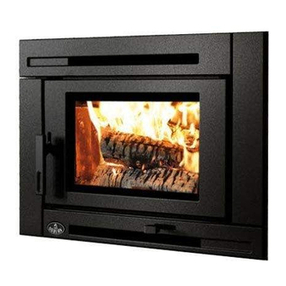
Osburn
Osburn Matrix Insert OB02028 User manual
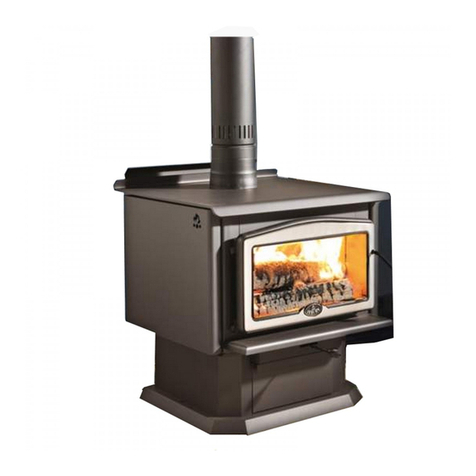
Osburn
Osburn OB02411 User manual
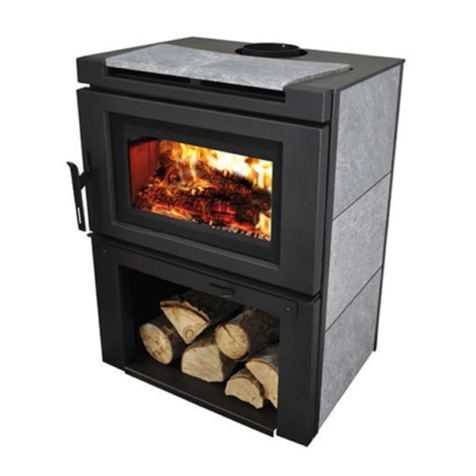
Osburn
Osburn MATRIX OB02032 User manual

Osburn
Osburn 3300 User manual

Osburn
Osburn 1800 User manual
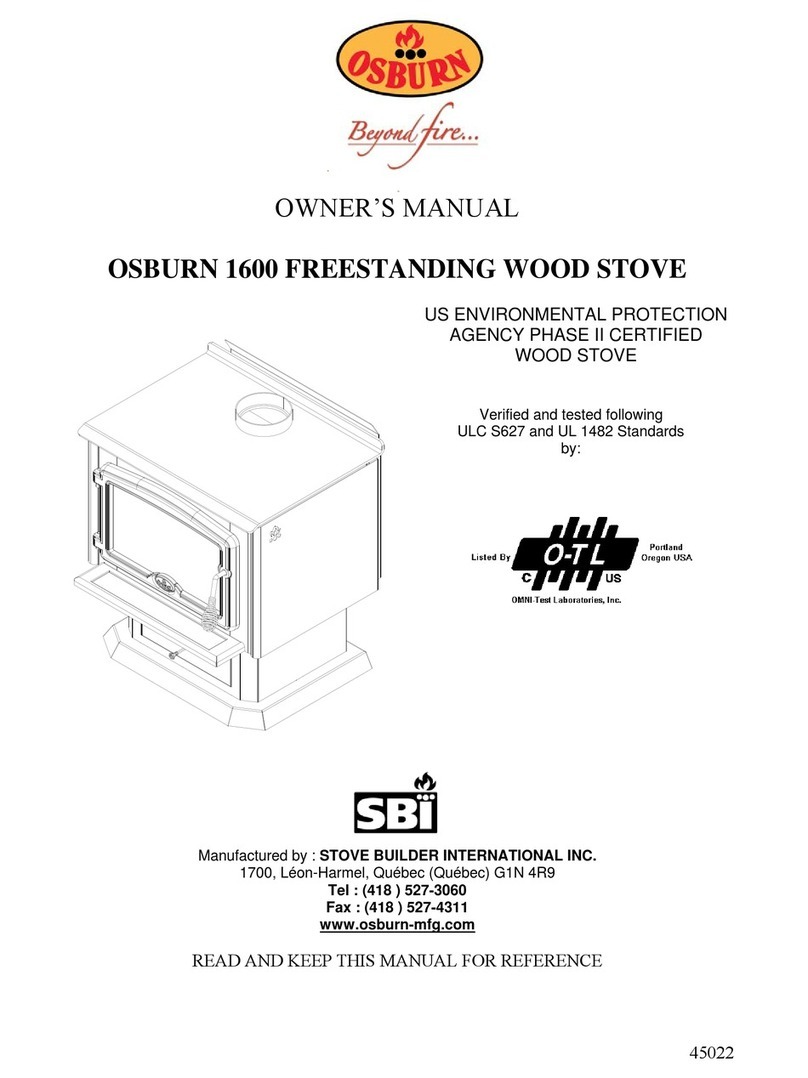
Osburn
Osburn 1600 User manual
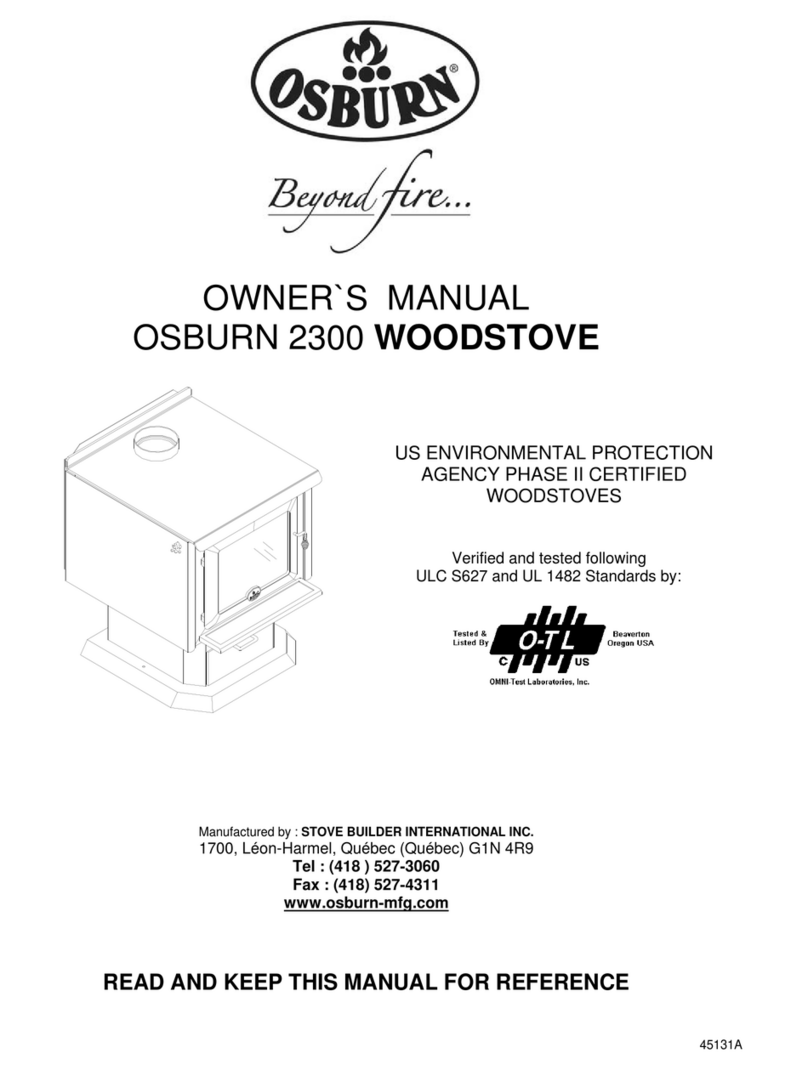
Osburn
Osburn 2300 User manual
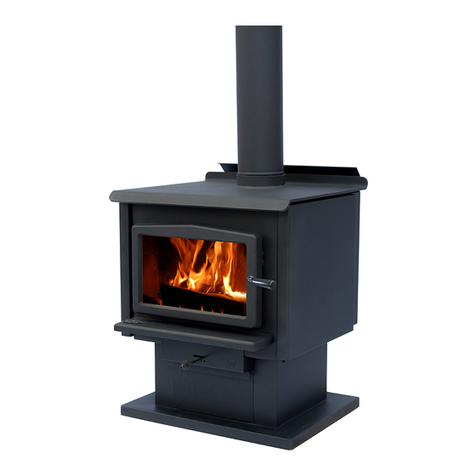
Osburn
Osburn 1600 User manual
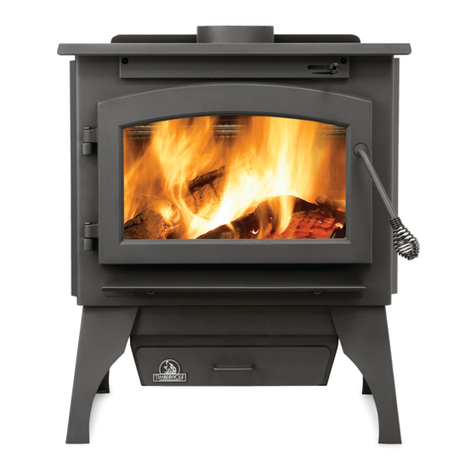
Osburn
Osburn 3300 User manual

Osburn
Osburn OB00900 User manual
Popular Wood Stove manuals by other brands

RAIS
RAIS attika NEXO 100 GAS installation guide

WoodPro
WoodPro WS-TS-1500 owner's manual

Contura
Contura C 586W installation instructions

Palazzetti
Palazzetti EVA GENERAL INFORMATION - WARNINGS - INSTALLATION - MAINTENANCE

Lopi
Lopi 1250 Republic owner's manual

Panadero
Panadero CAPRI 3V Usage and maintenance instructions
